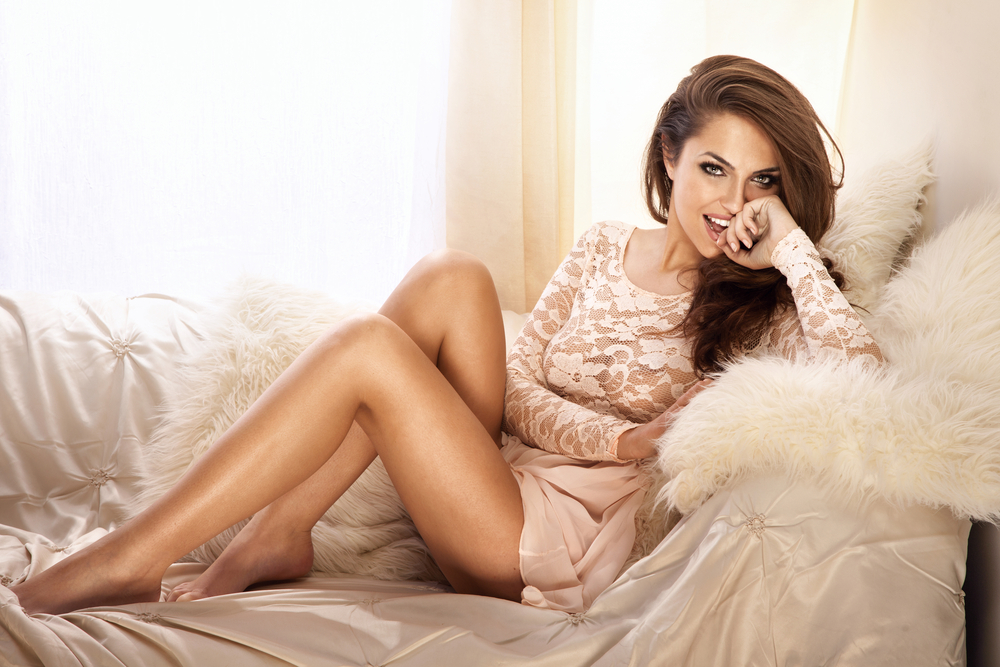
The world of modeling is often associated with glamour, glitz, and the perfect picture. From magazines to billboards, the modeling industry continuously captures our attention and leaves us in awe of its beauty. Behind every stunning photograph, there is an art to modelling (or modeling) that goes far beyond just looking good. Let's delve into the secrets and techniques that can help perfect any photoshoot.
The Key to Success: Confidence and Comfort
modeling is not just about having the right physical attributes or striking a pose. It's about exuding confidence and feeling comfortable in front of the camera. A good model knows how to project their personality through their eyes, body language, and expressions.
One technique that successful models employ is to practice in front of a mirror. This allows them to study their facial expressions, body posture, and angles that best suit their features. By understanding their strengths and weaknesses, models can develop their unique style and build self-assurance.
Communication with the Photographer
Collaboration between the model and the photographer is crucial to capture the desired image. Prior to the shoot, it's essential to discuss the concept, mood, and goals with the photographer. This helps establish a clear understanding and vision for the photoshoot.
Ask the photographer for guidance and discuss any specific poses or movements they may have in mind. Their expertise can guide you in finding the perfect angles and postures that best complement the clothing or product being advertised.
The Power of Posing
Pose like a pro! Knowing how to pose effectively is an essential skill for models. Each shoot and outfit may require different poses to convey the desired message. Experimenting with angles, lines, and proportions can drastically change the dynamic of an image.
Lean on objects, play with your hands, or cross your legs to achieve a more natural look. Straighten your back, elongate your neck, and maintain good posture for a more elegant appearance. Practice different poses in front of a camera or with a friend to better understand your body and how poses can enhance your features.
The Role of Facial Expressions
Facial expressions are crucial in modeling (or modelling) as they can convey various emotions and messages. modeling (by models) The eyes, in particular, are incredibly expressive and can captivate the viewer. Experiment with different expressions, such as joy, surprise, or vulnerability. Each emotion can evoke a distinct response from the audience.
It's important to relax your facial muscles and avoid tension, as this can translate poorly on camera. Practice in front of a mirror to master different expressions and find the ones that suit you best.
Lights, Angles, and Equipment
Understanding lighting and its impact on a photo is essential. Different lighting setups can dramatically alter the mood, shadows, and overall aesthetic of an image. Dedicating time to learn about the various lighting techniques will help you adapt and take advantage of any situation.
Angles can also significantly impact the final result. Experiment with different positions to find ones that flatter your features. For example, shooting from above can elongate the body, while a lower angle can add a sense of power and authority.
Lastly, understanding the equipment being used can give you an edge. Familiarize yourself with different camera lenses, focal lengths, and other tools photographers commonly use. This knowledge will allow you to make small adjustments to optimize your performance and the overall outcome of the photoshoot.
Frequently Asked Questions
How do I find the right modeling agency?
Finding the right modeling agency takes research and due diligence. Look for agencies that have a good reputation and represent models with a similar look or style as you. Submit your portfolio and attend open calls to increase your chances of getting noticed.
What should I include in my modeling portfolio?
Your modeling portfolio should showcase your versatility and range. Include a variety of high-quality images that display your ability to portray different characters or styles. It's also beneficial to include tear sheets, which are published works featuring you as a model.
What should I wear to a photoshoot?
Wear clothes that highlight your figure and complement your features. Neutral or solid colors are generally advised as they don't distract from the main focus, which is you. Additionally, bring a selection of wardrobe options that match the photoshoot concept.
How do I handle rejection in the modeling industry?
Rejection is a common part of the modeling industry. It's important to remember that the industry is competitive and subjective. Use rejection as an opportunity to learn and grow. Stay positive, focus on your unique qualities, and keep pushing forward.
What makes a successful model?
A successful model encompasses a combination of physical attributes, professionalism, and work ethic. Great models have a strong sense of self, work well with others, and constantly hone their craft. Being adaptable, punctual, and reliable are also key qualities that agencies and clients look for.
Mastering the art of modelling takes time, dedication, and continuous learning. By focusing on confidence, communication, posing, expressions, lighting, angles, and equipment, you can perfect your photoshoots. Remember, each photoshoot is an opportunity to grow, learn, and showcase your unique style. Embrace the journey, and let your inner model shine!
Other useful resources
- https://en.wikipedia.org/wiki/Modeling_agency
- https://blog.planetmodelphoto.com/models/modeling/
- https://www.planetmodelphoto.com